
My first chair rail installation went incredibly well. Not only was it not too difficult (there were only a few times where my head hurt from trying to figure out my angles) but I am also loving how it’s turned out and am contemplating adding chair rail throughout our entire home. That’s excessive, I know, but it adds so much beautiful character that I can’t get enough of. Plus, the little details that someone can incorporate make it feel so custom and special that I just cannot get enough.
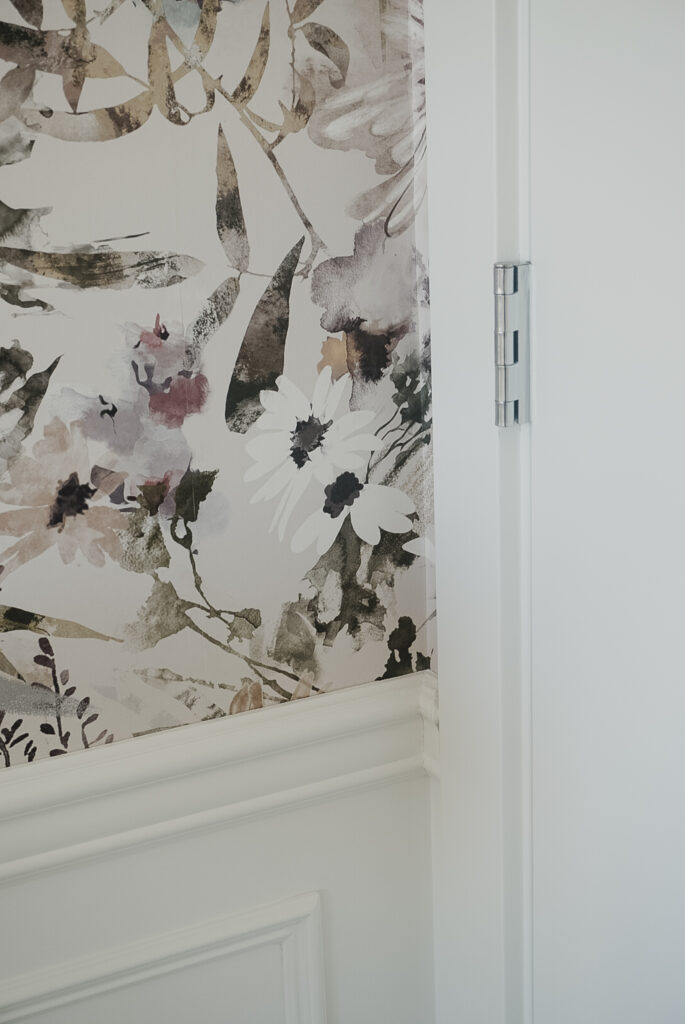
Chair Rail – It’s All in the Details
There are important details when it comes to chair rail. In the instance of our home, the rail didn’t butt up against the existing moulding around the doors and closets very nicely so I needed a solution for this. In addition, there is no moulding around the windows so the chair rail couldn’t just end awkwardly. Oh, the other thing I stupidly did was made the chair rail the exact height as one of the light switches – I was going to frame it out with moulding but only had a weekend do get the bulk of the work done in Sloane’s room so I would have ran out of time figuring this out and needed a quicker solution. I decided to create little end caps for the rail to make the ends more intentional and complete. This was the hardest part, yet the most critical part of the entire chair rail operation.
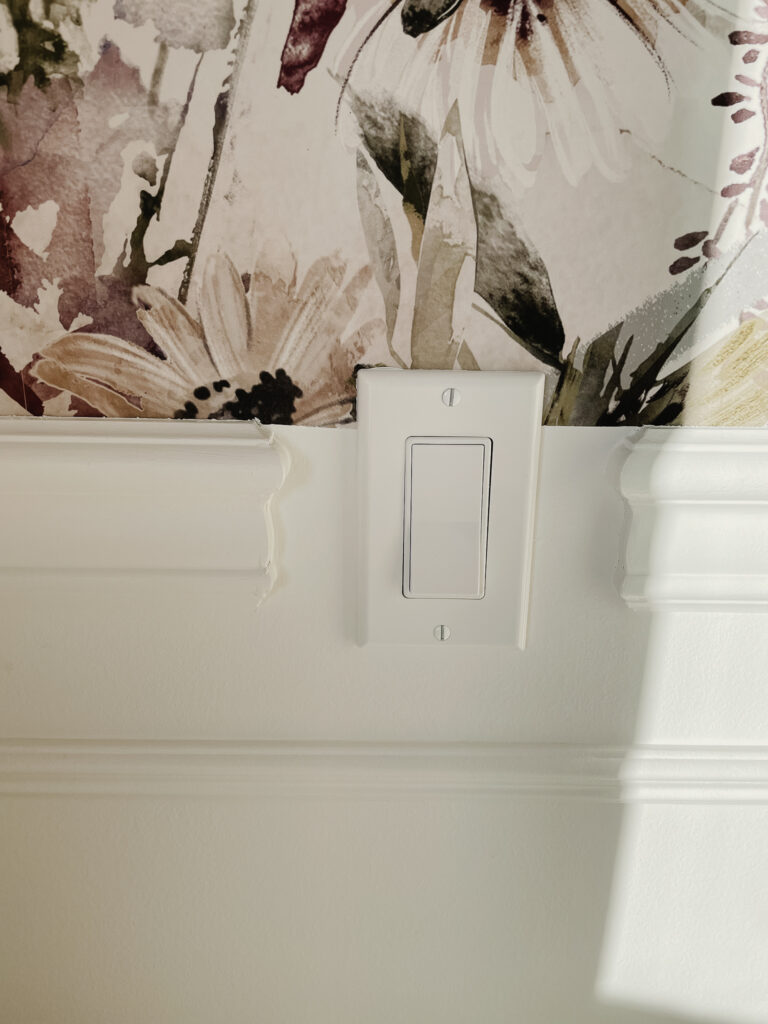
Tools and Material You Need to Install Chair Rail
- Chair rail – measure the walls you are installing chair rail onto and that is how many fee you need. I measured my two long walls first so I knew the longest pieces I needed. Then I did the shortest ones and added them up. I tend to add 0.5-1 ft of a buffer for some whoopsies flexibility. Write down these measurements and save them for later.
- Mitre Saw
- Coping Saw (optional but helpful)
- Wood Glue
- Clamps (a lot of them) or elastics or painters tape
- Laser Level (or regular level)
- Nail Gun and Nails
- Wood filler
- Sanding Block
- Paint + painting tools
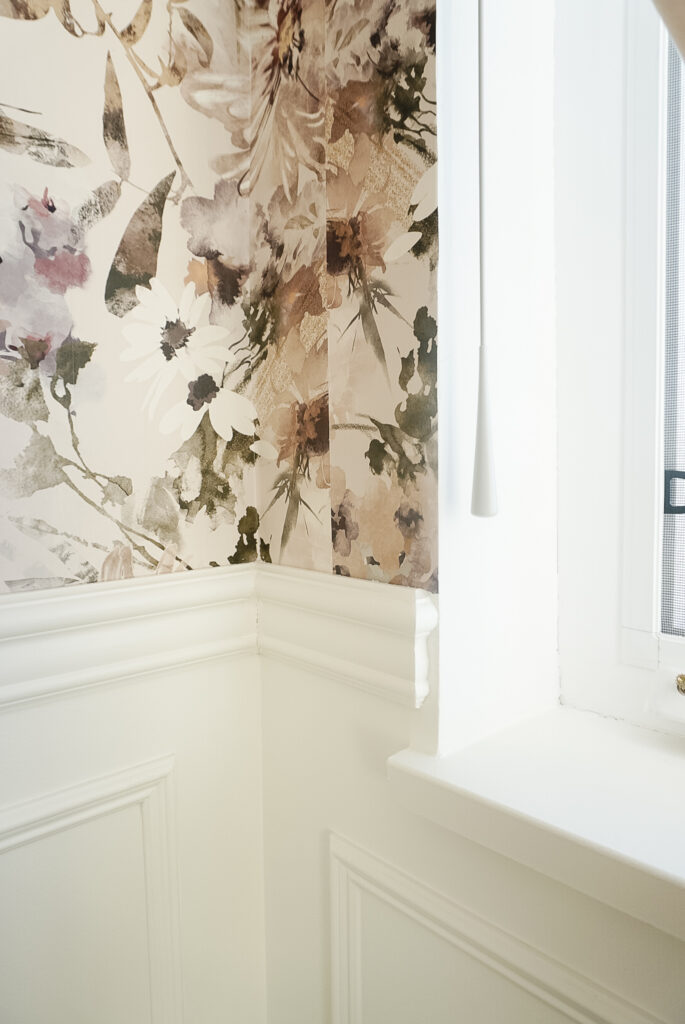
How to Install Chair Rail
Thanks to this youtube video, I recently learned the difference between a mitre cut and a bevel cut. If you don’t know the difference – I would suggest watching the video. It explains it really well. Effectively if you are joining moulding in a corner, it will be a bevel cut. If you are framing something out with moulding it will be a mitre. Watch the video – they’ll do a better job of explaining it.
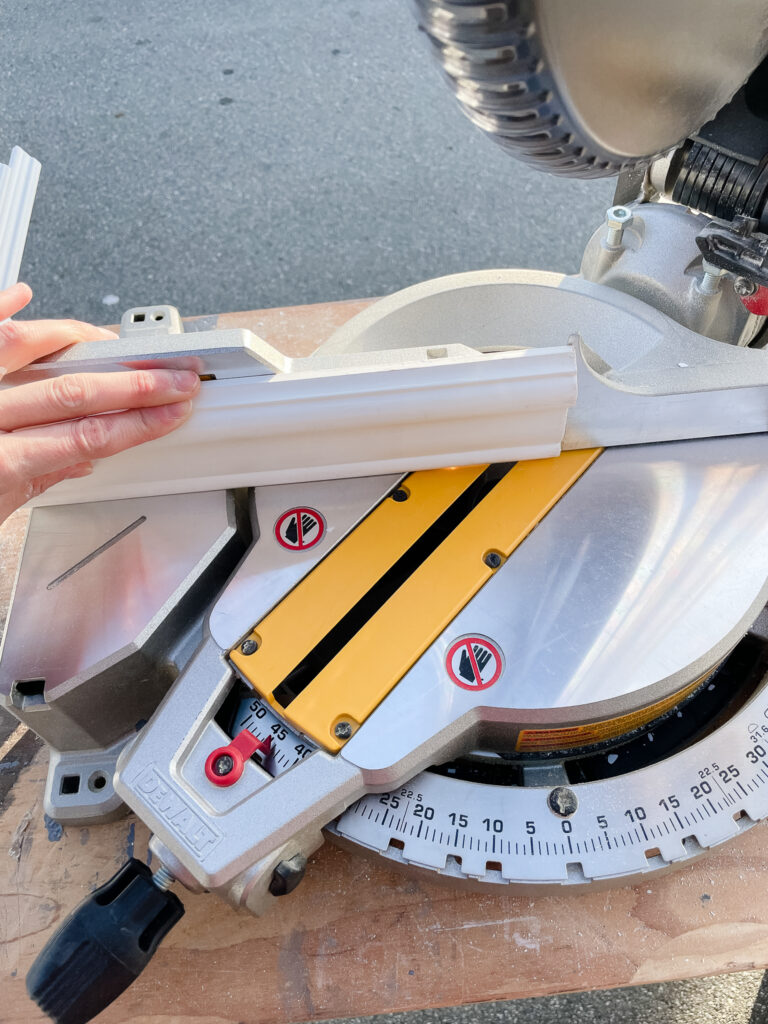
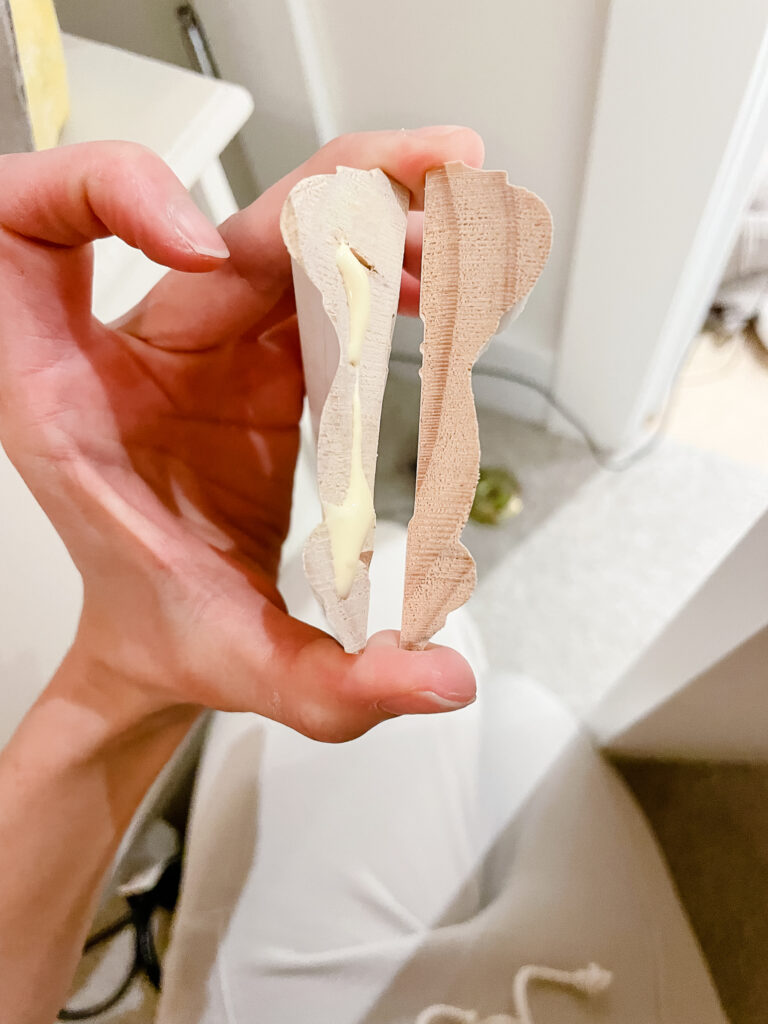
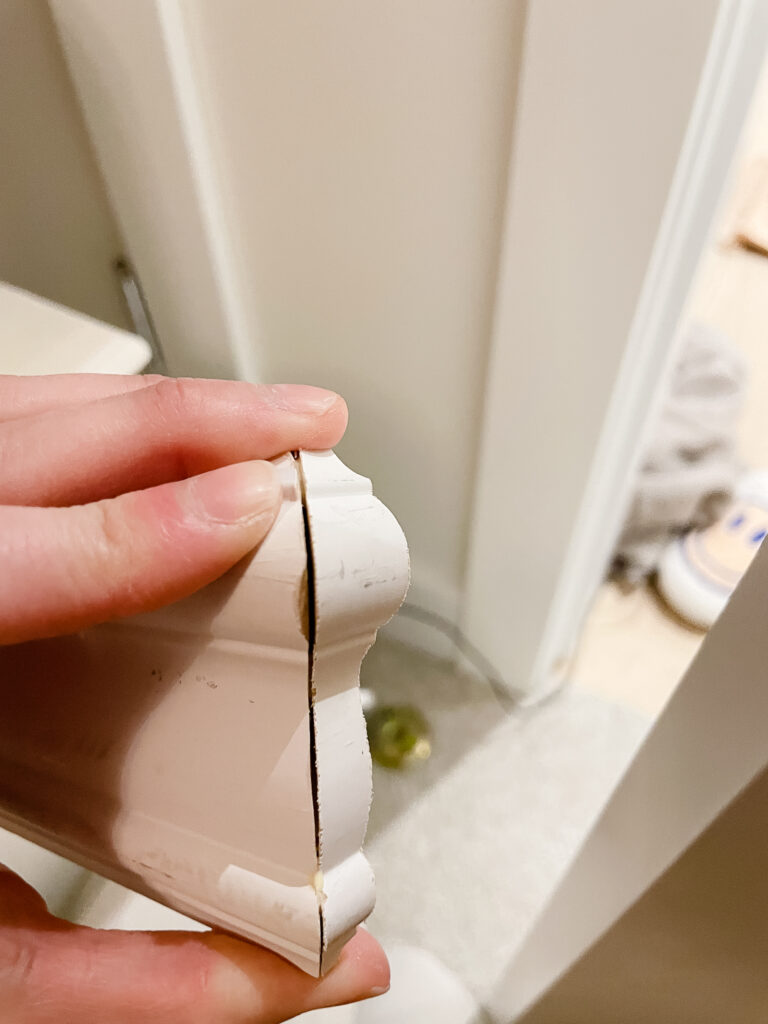
- Measure your walls and make each of your bevel cuts at 45 degree angles. You want the material to be angled outwards (meaning the long side is at the back where the rail will be flush against the wall). The best is to leave the mitre saw set to your 45 and rotate the rail as you make your cuts so that you have the same, consistent angle each time.
- I measure and cut one piece of chair rail at a time starting with my longest piece (in the event I mess up, I can make it into a smaller piece and use another long piece to try again). Before I make my next cut, I confirm that I have cut it correctly – the right length and that everything fits ok. I used my coping saw to then do a back cut on one side of two connecting pieces – here’s another great video that explains this.
- When you’re butting into an existing piece of moulding (around a closet, door, etc.) or if the chair rail is ending and you can see it clearly, you can create an end cap for your chair rail to make it look more complete (as pictured above). You want to take an extra piece of moulding and cut a bevel at the opposite 45 degree angle to your existing cut. You want this opposite cut to be left on the long piece of moulding because you are then going to make a 90 degree cut as close to that beveled corner as possible. This piece of chair rail should fit in perfectly with your other one and create a seamless corner. I used wood glue to secure it together and clamps to hold them in place. You could also try painters tape or elastic bands if you didn’t have enough clamps. There’s a video explanation of this here.
- Using your laser level, level out where you want your rail to go and then nail away. Nailing into studs is idea, but you can also add your nails in at an angle with them making an “X” to lock them in place in behind. You’re welcome to glue this on if you feel so inclined. I find with smooth walls, nailing to be sufficient.
- Repeat this process until your chair rail is installed.
- Fill and sand your nail holes and the corners where the rail connects. Once the workspace is clean and free of dust, caulk the top bottom and sides of the chair rail. Get your paint gear out and paint away.
- That’s it – you’re done! It really isn’t too complicated to install chair rail and makes for a beautiful addition to a space.
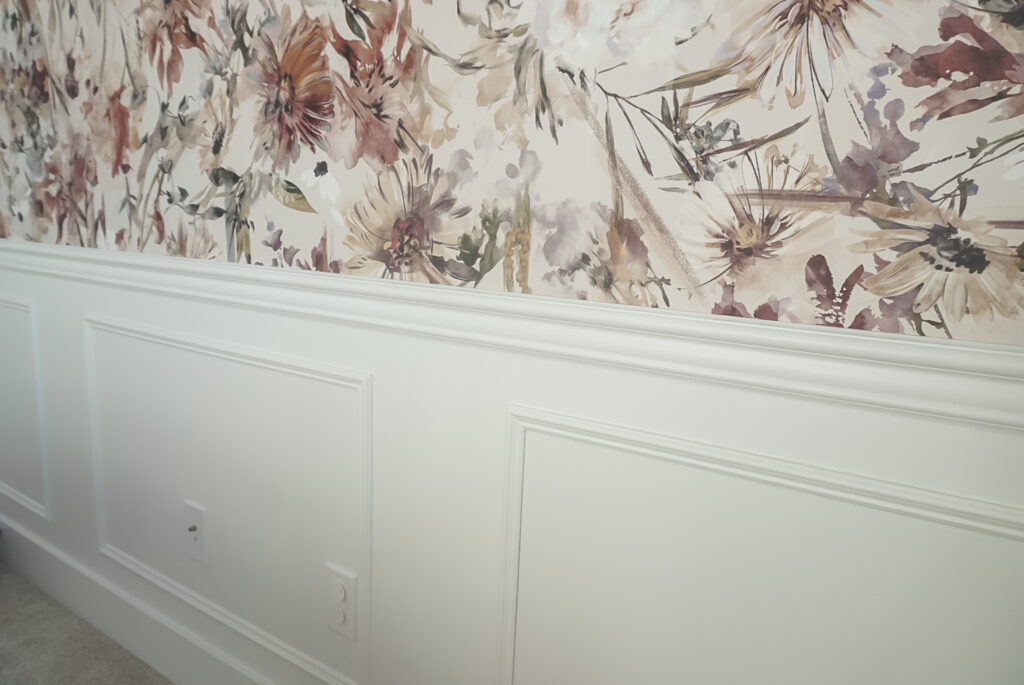

This post is sponsored by HomeHardware. All content and thoughts shared are my own. W e are heading
Here we go – another round of peel and stick wallpaper. If you’ve been a long-time reader, you�
The second book display has entered the building! After my first smaller book display (following the



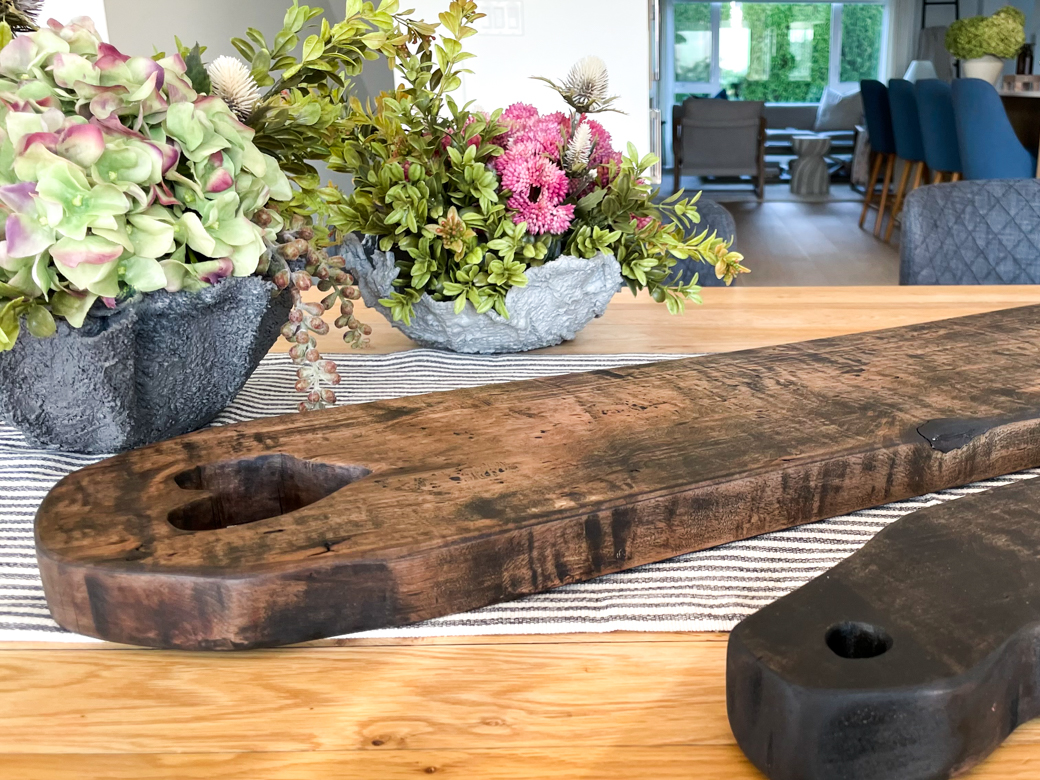
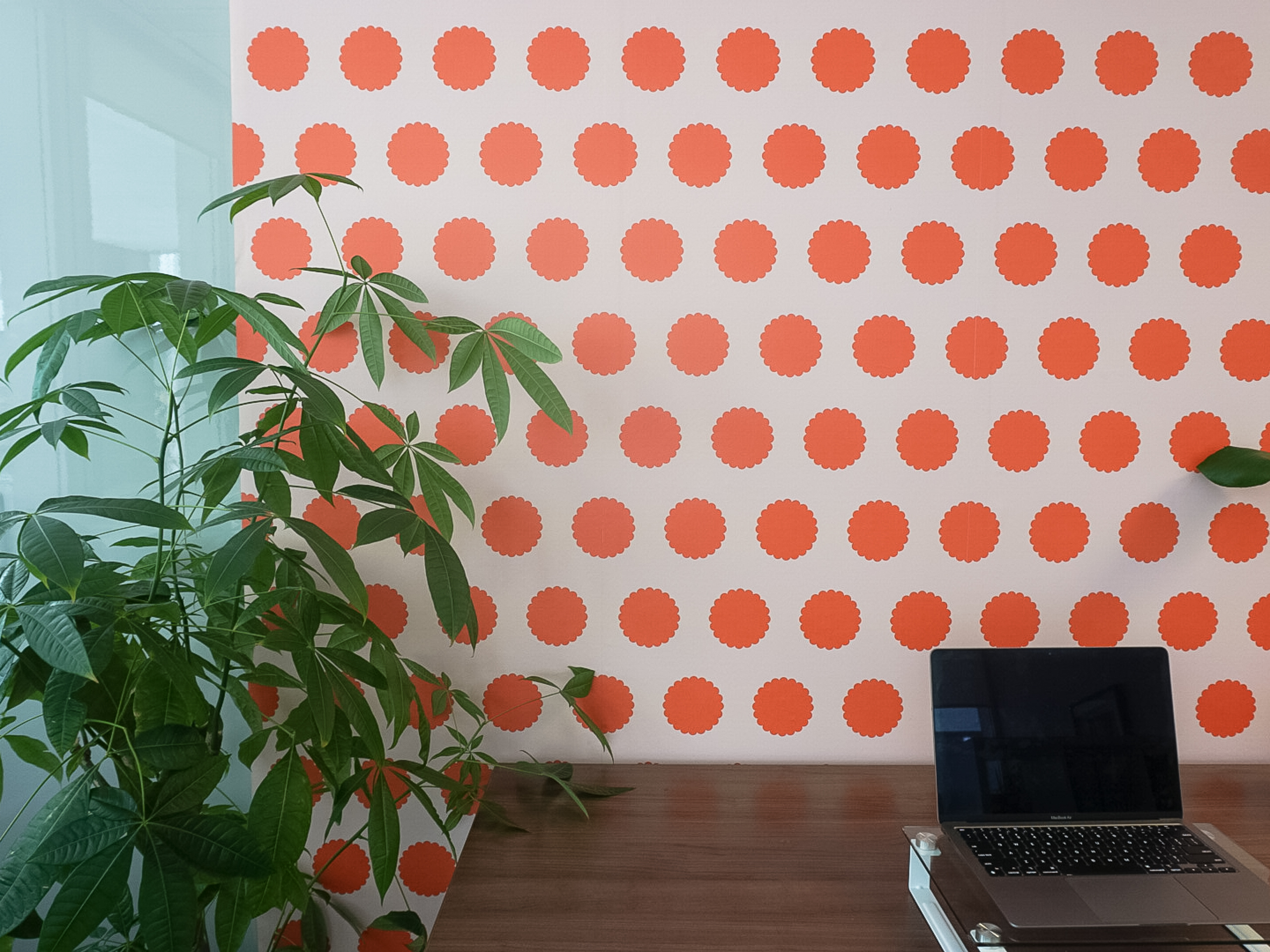
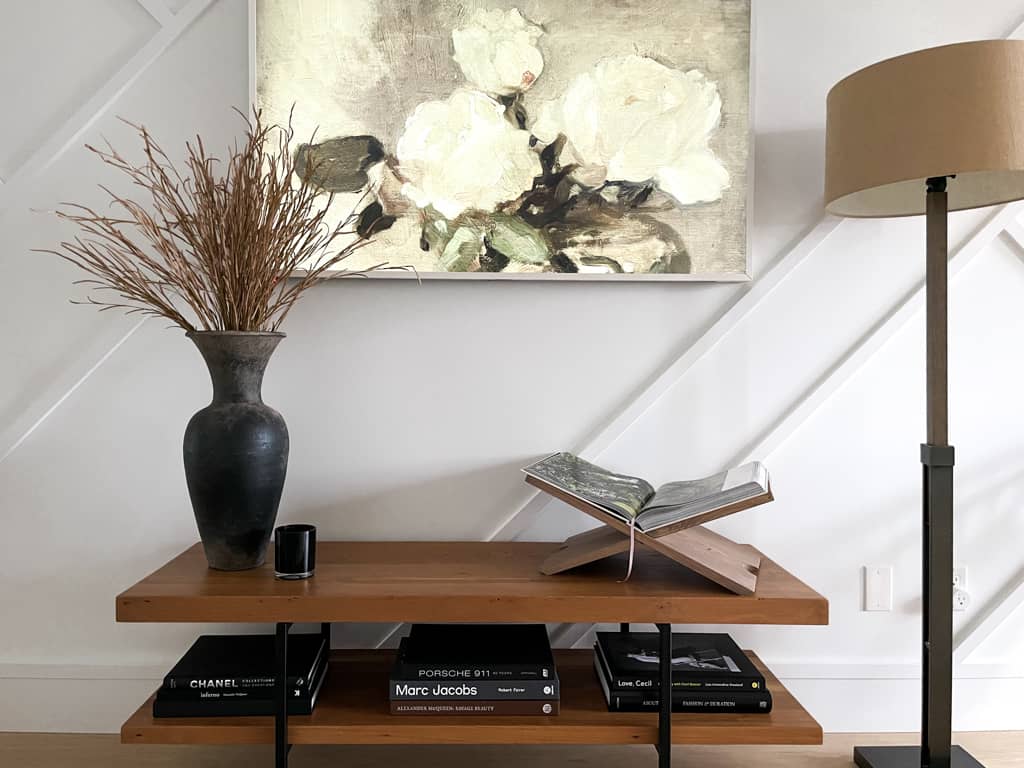
Leave a Reply